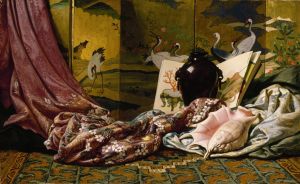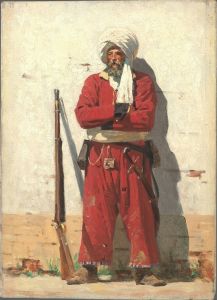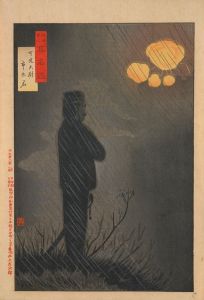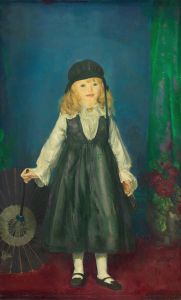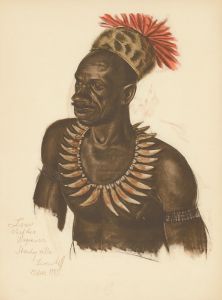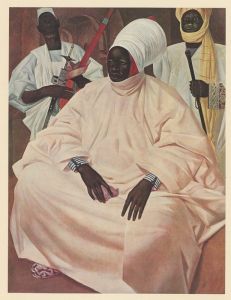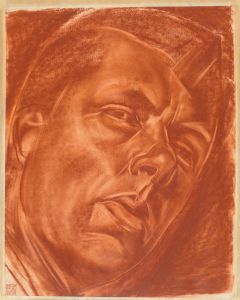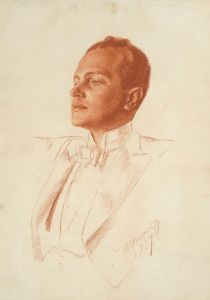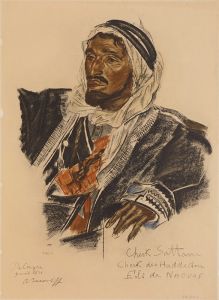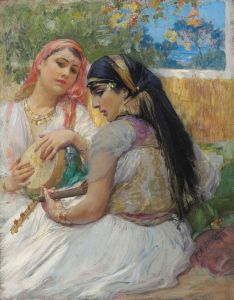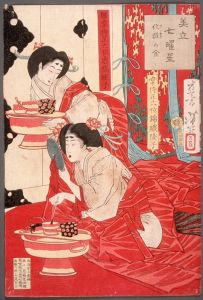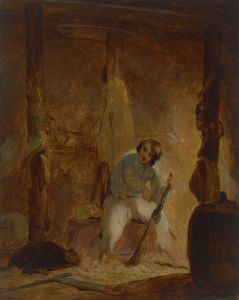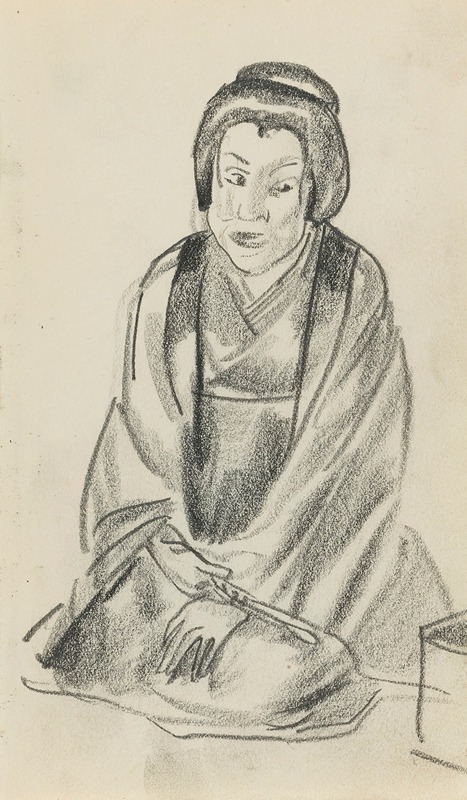
Japanese Figure
A hand-painted replica of Alexandre Jacovleff’s masterpiece Japanese Figure, meticulously crafted by professional artists to capture the true essence of the original. Each piece is created with museum-quality canvas and rare mineral pigments, carefully painted by experienced artists with delicate brushstrokes and rich, layered colors to perfectly recreate the texture of the original artwork. Unlike machine-printed reproductions, this hand-painted version brings the painting to life, infused with the artist’s emotions and skill in every stroke. Whether for personal collection or home decoration, it instantly elevates the artistic atmosphere of any space.
Alexandre Jacovleff's Japanese Figure is a painting created by the Russian-born artist Alexandre Jacovleff (also spelled Yakovlev), who was known for his diverse body of work that spanned portraiture, landscapes, and ethnographic studies. Jacovleff was an artist of the early 20th century, associated with the Neoclassical movement and later recognized for his contributions to the art of exploration and travel.
The painting Japanese Figure reflects Jacovleff's interest in capturing the cultural and aesthetic essence of the subjects he encountered during his travels. While specific details about the creation date and circumstances of this particular work are not widely documented, it is consistent with Jacovleff's broader oeuvre, which often depicted individuals from various cultural backgrounds with meticulous attention to detail and a sensitivity to their unique characteristics.
Jacovleff was a member of the French artistic and intellectual community, having moved to Paris in the early 20th century. He became associated with the Ballets Russes and worked as a stage designer, which influenced his artistic style and understanding of dramatic composition. His travels, particularly as part of the Citroën-sponsored expeditions in the 1920s and 1930s, brought him into contact with diverse cultures across Asia, Africa, and the Middle East. These experiences deeply informed his work, as he sought to document and celebrate the richness of human diversity.
Japanese Figure likely belongs to a series of works in which Jacovleff explored the traditional attire, posture, and demeanor of his subjects. His ability to render intricate details, such as clothing patterns and facial expressions, demonstrates his technical skill and his respect for the cultural heritage of the people he portrayed. The painting is an example of Jacovleff's commitment to blending artistic mastery with ethnographic observation.
As with many of Jacovleff's works, Japanese Figure is characterized by a harmonious balance between realism and idealization. The artist's use of light, shadow, and composition enhances the dignity and individuality of the subject. While the painting itself is not as widely known as some of his other works, it remains a testament to his artistic vision and his fascination with the human form and cultural identity.
Further details about the painting, such as its current location, provenance, or specific historical context, are not readily available in public records. However, it remains an important piece within Jacovleff's body of work, reflecting his broader artistic and cultural interests.





